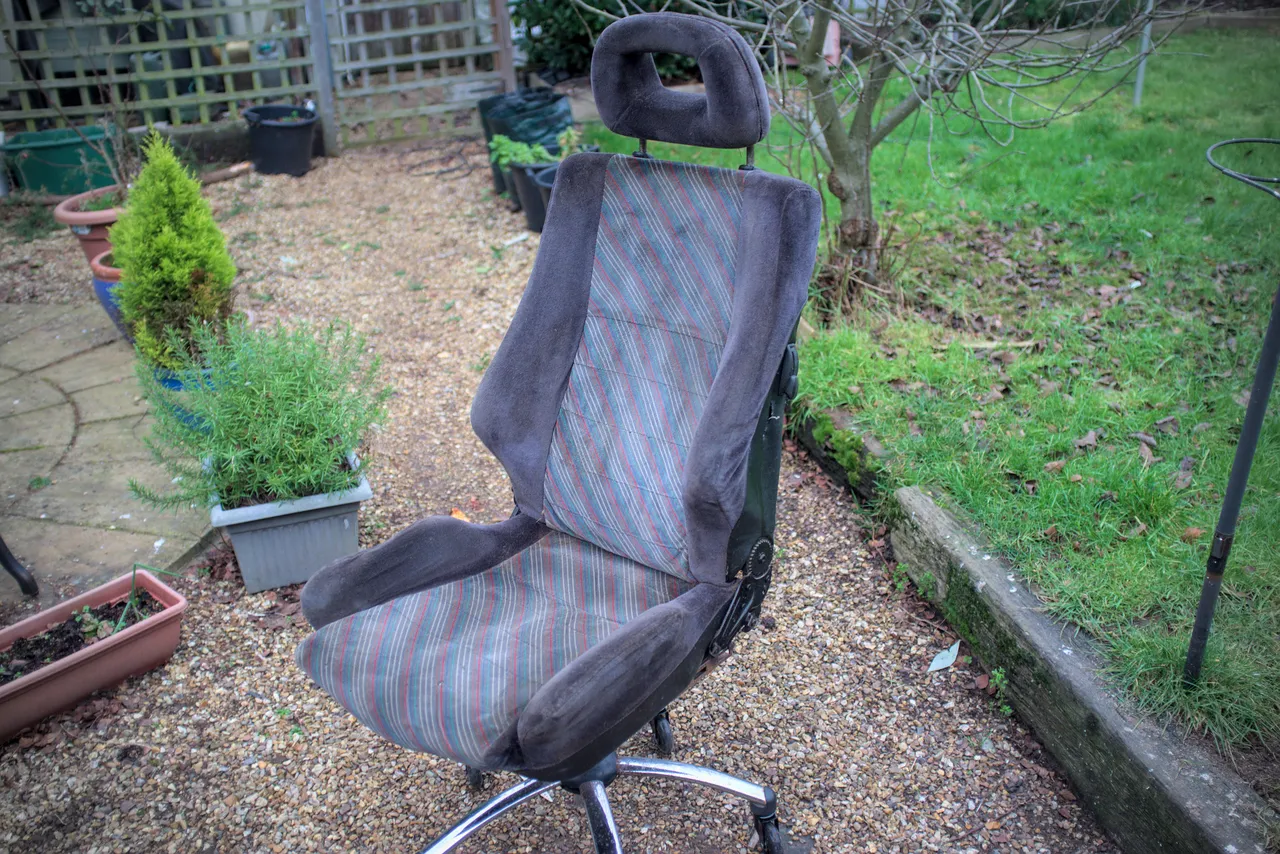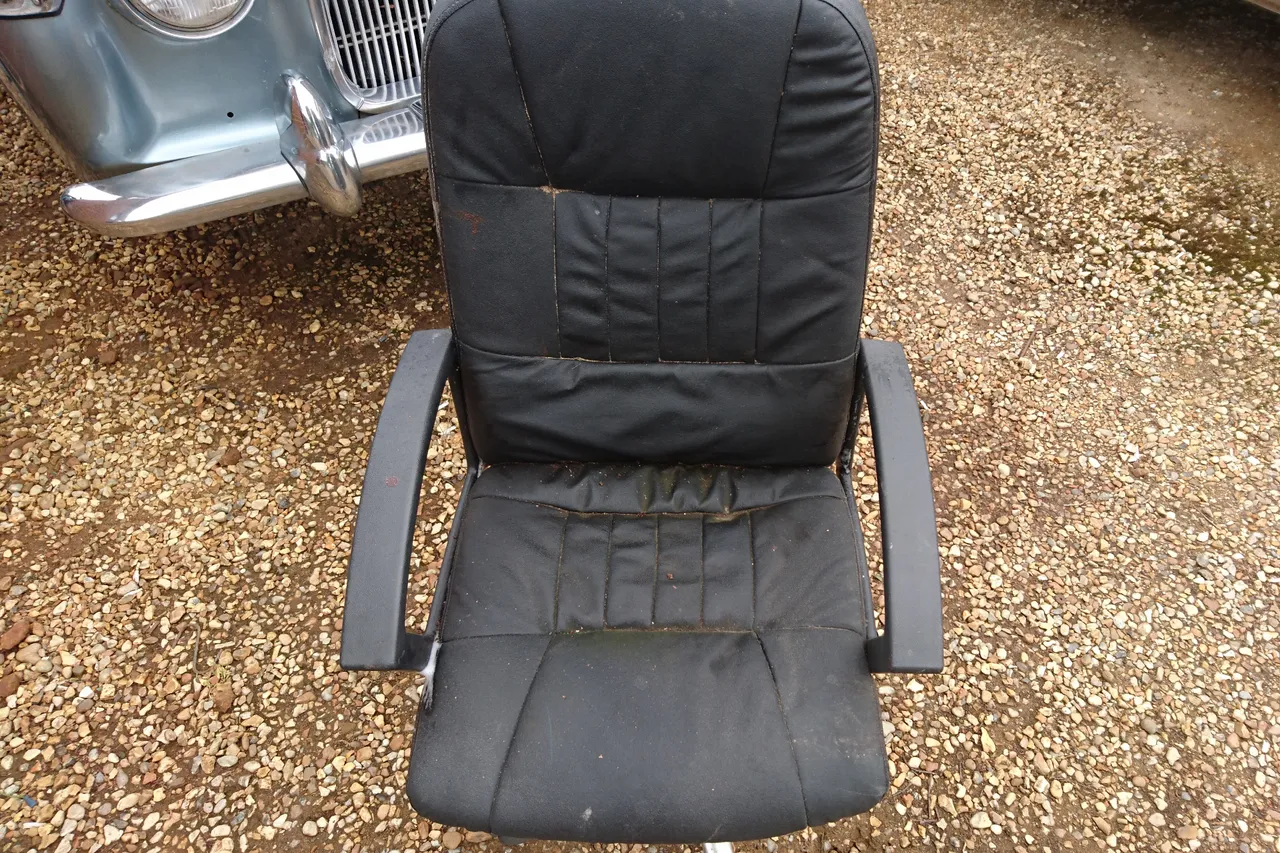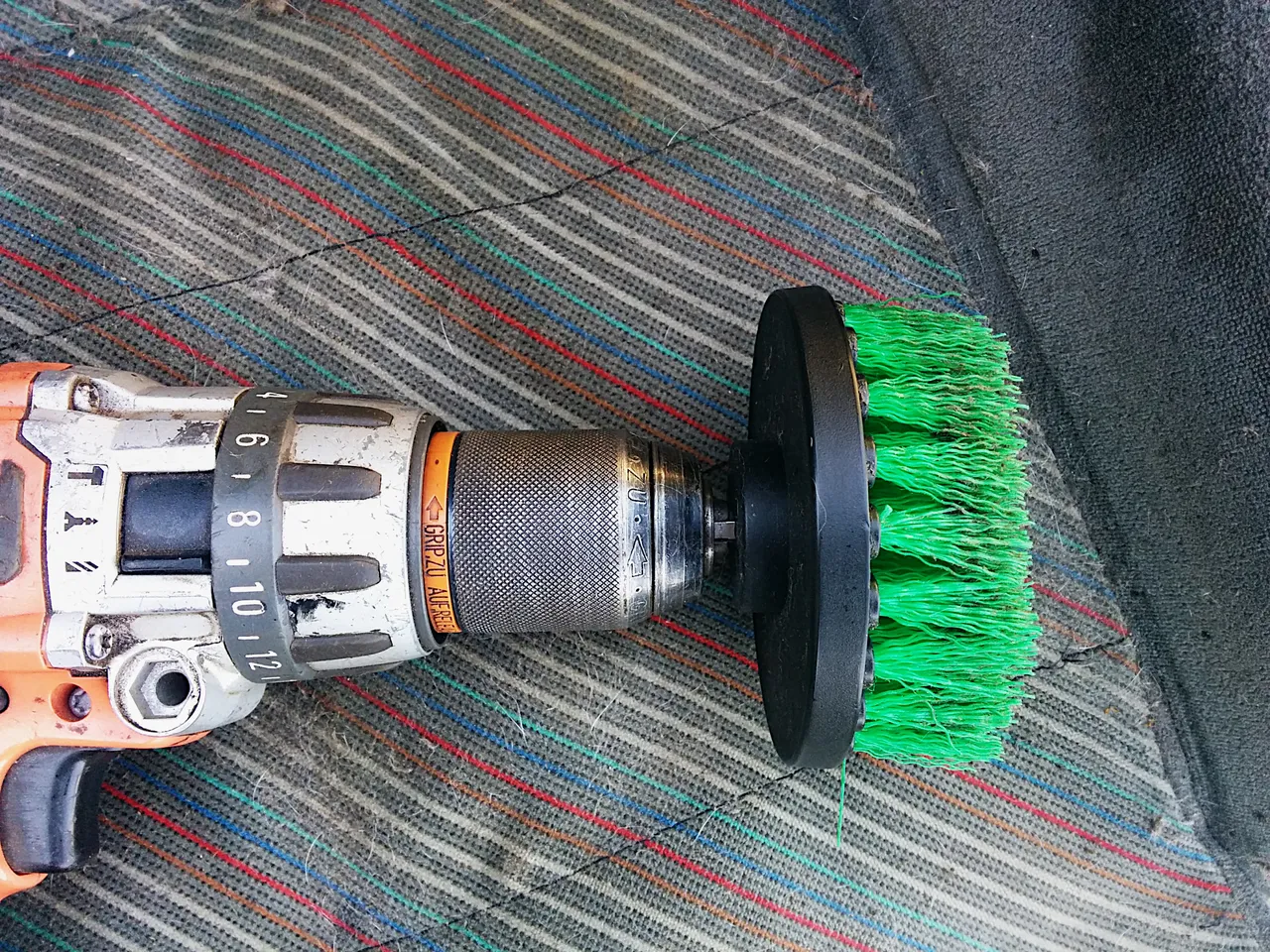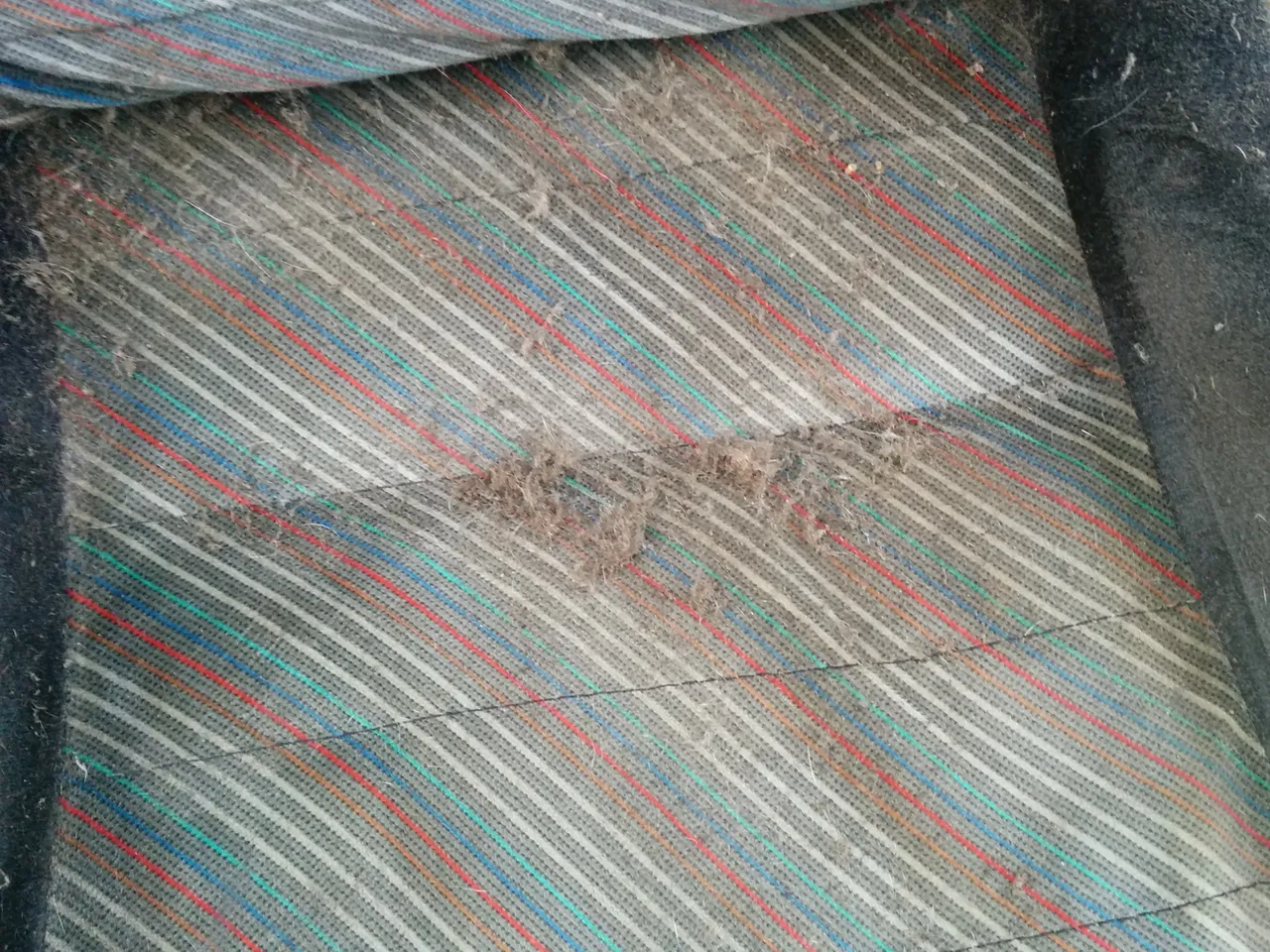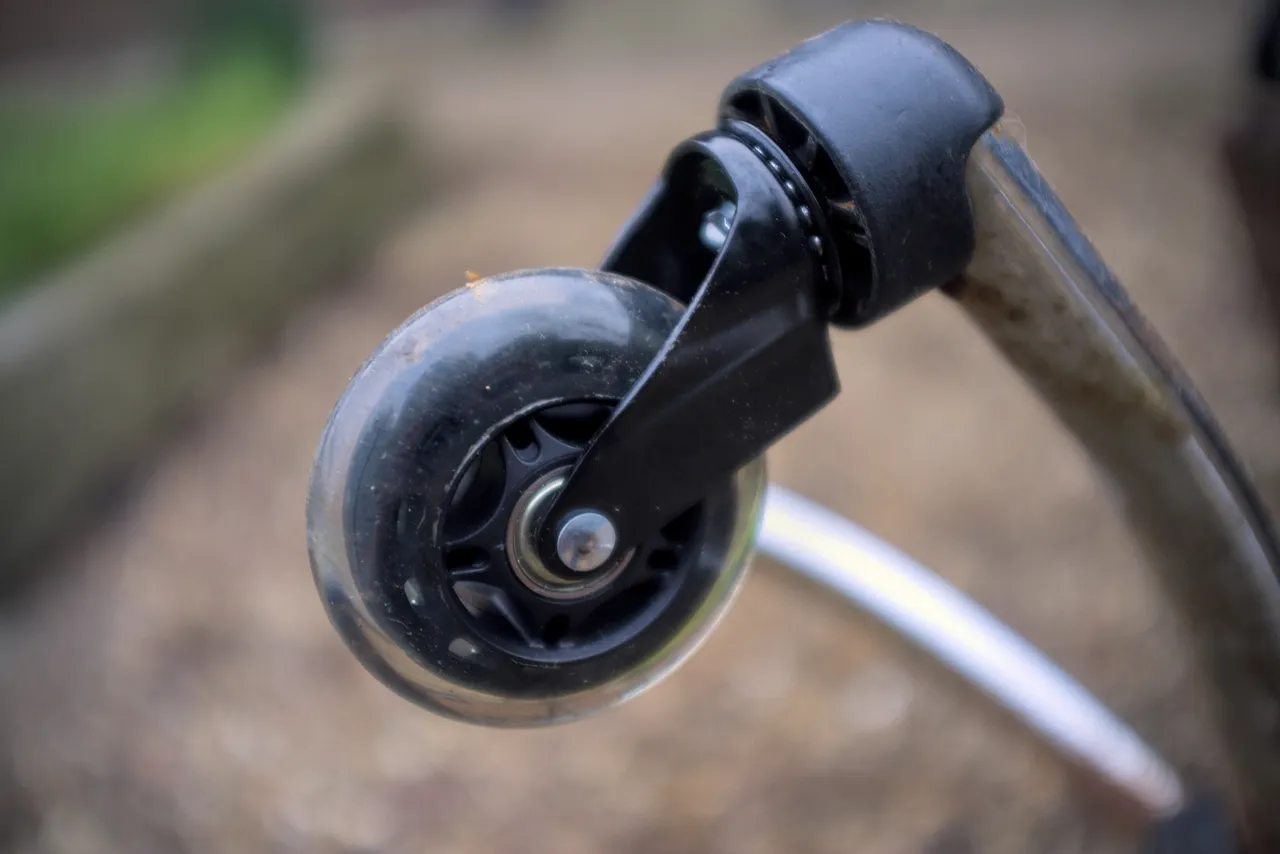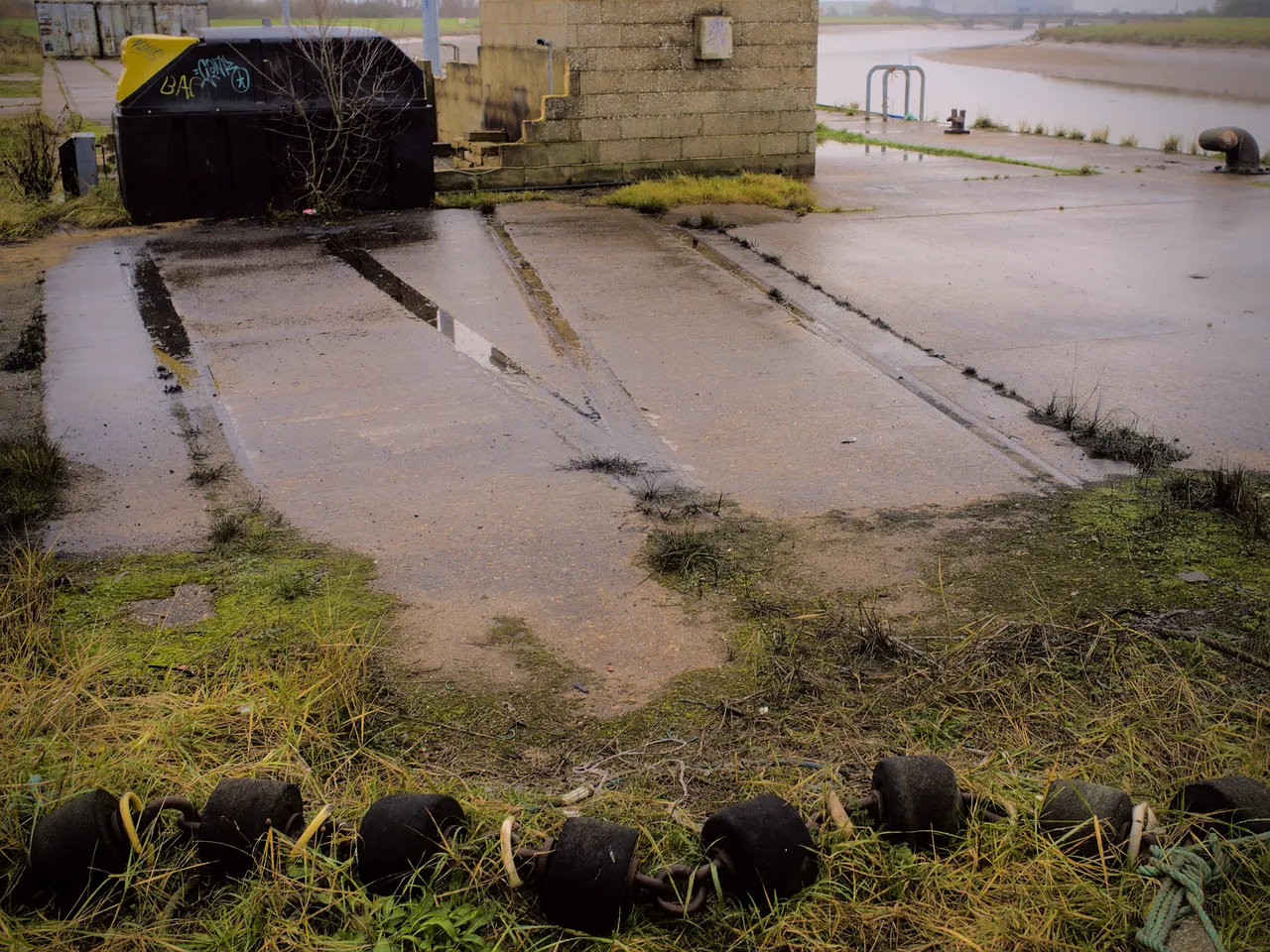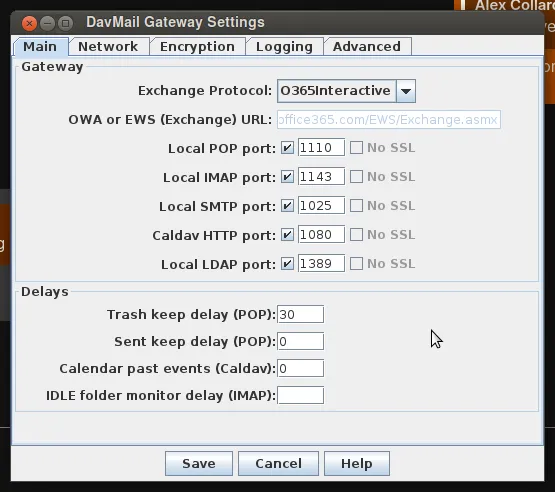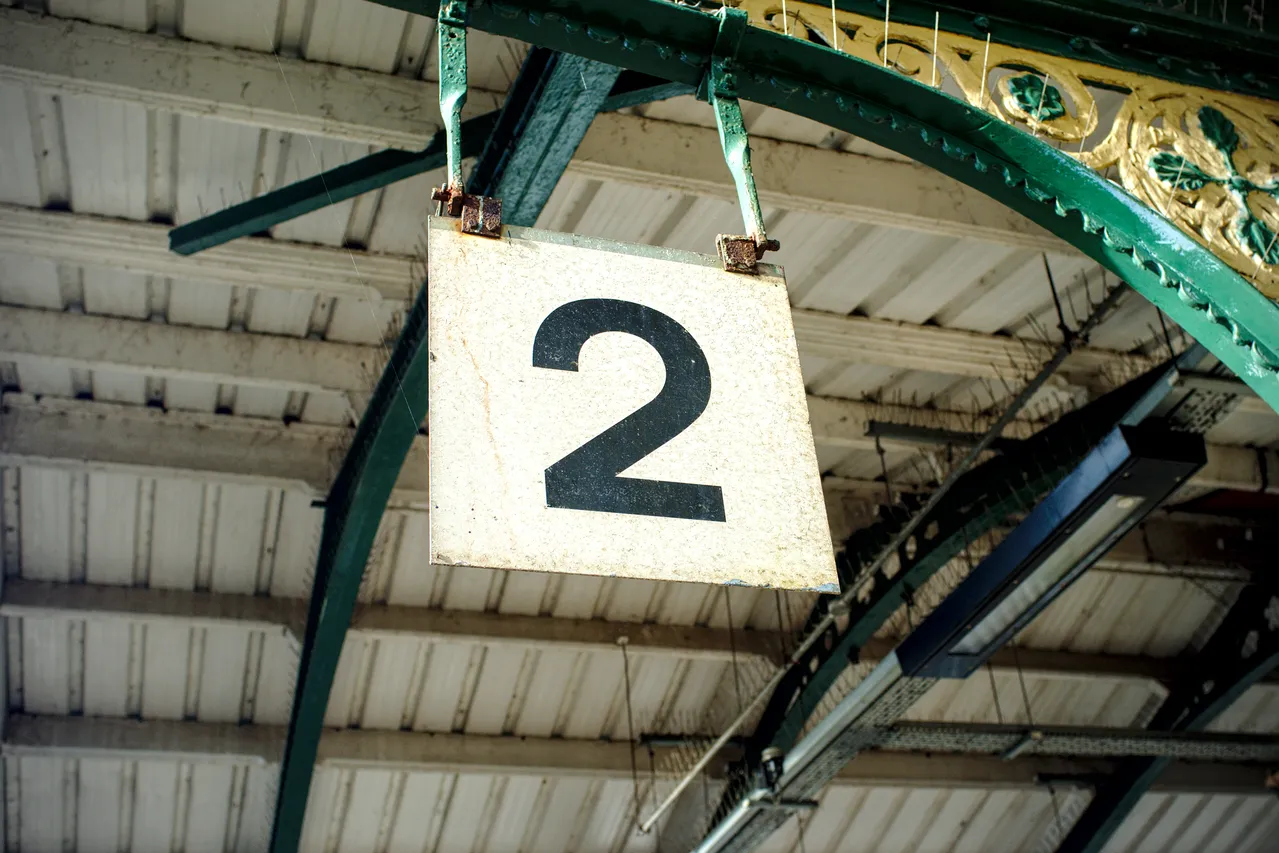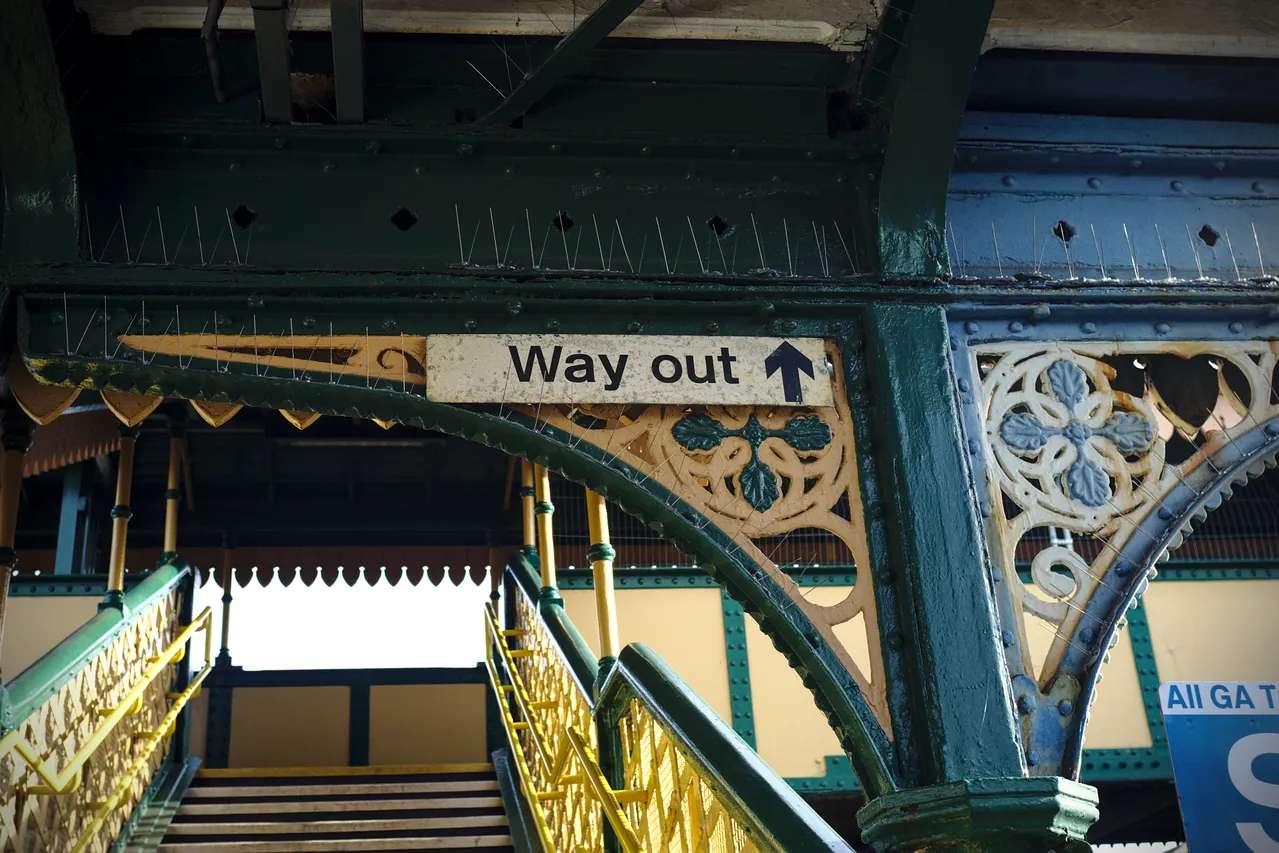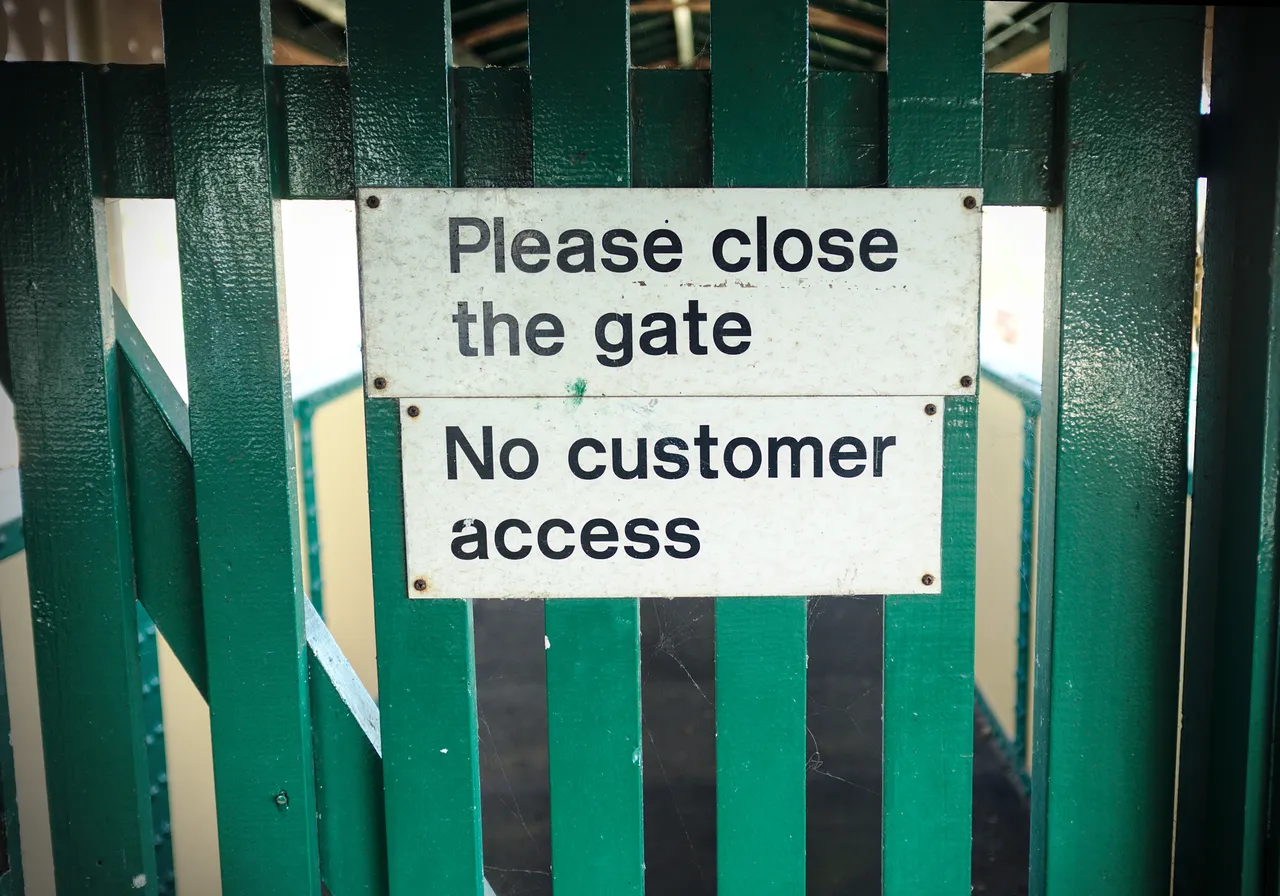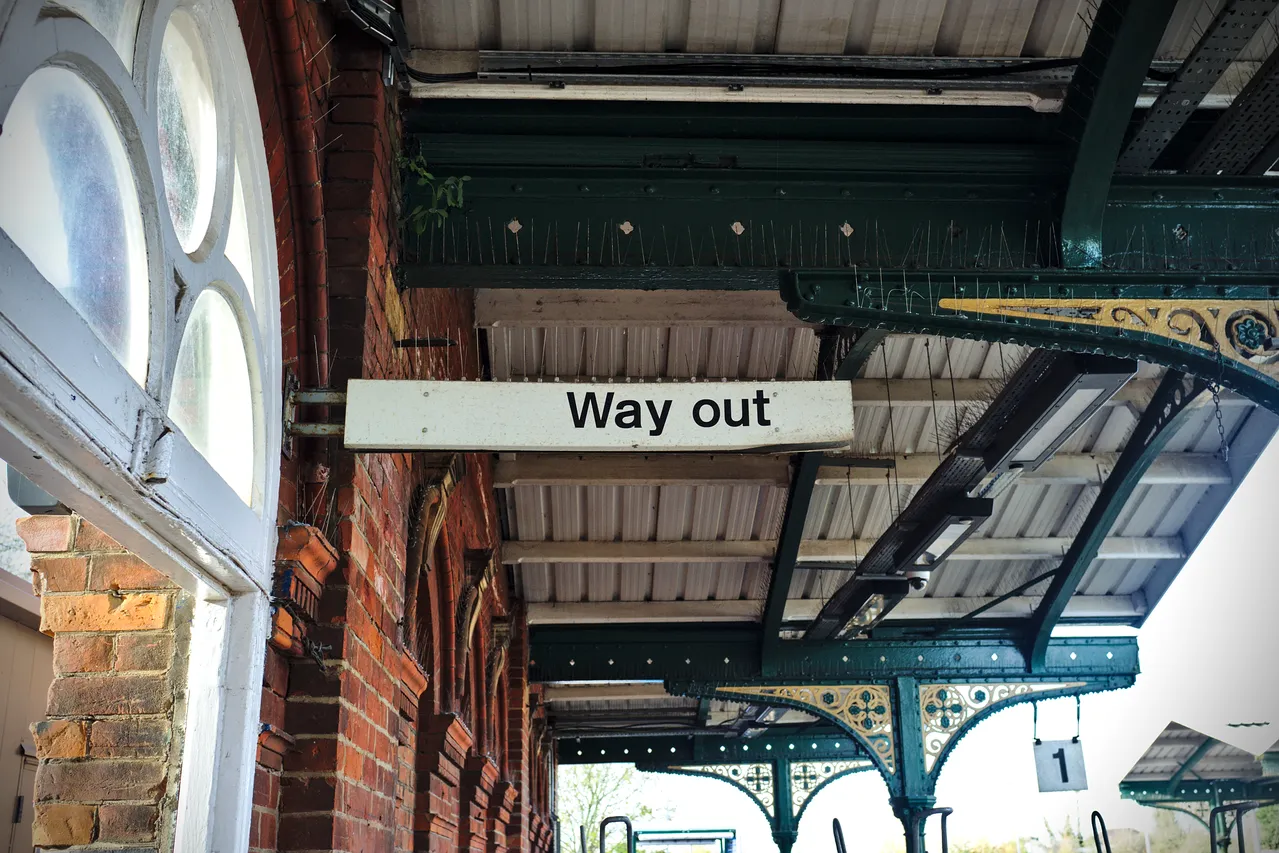The desk chair post
This is my desk chair.
It is a front seat from a 1990 Vauxhall Astra GTE, bolted to a subframe made from steel box section scavenged from some industrial shelving, welded to a swivel-chair base that I found in a skip. I've had some variant of it for over a decade, but I had cause to re-engineer it recently, so I am posting about it now. It's extremely comfortable! It is more supportive than any other chair I have used, including chairs that look like car seats, and including chairs that cost upwards of a grand.
There are two of these in existence! My brother was dismantling an Astra GTE that he purchased for an engine donor (MOT-failure GTEs were not worth much more than scrap weight back then, and that is a memory from the "painful to think about" department, next to the working two-door Range Rover I helped dismantle...). I got the seat for free on the condition that I made the other front seat into a desk chair for him as well. That other chair is still in use by a kid in the family as a gamer chair, and that makes me happy.
It has been rebuilt several times. This is because office swivel chairs are made of no material in particular, especially the cheap kind that gets thrown into a skip when it becomes too ugly to use. Usually this does not matter, because the sitting part of a swivel chair is also made of no material in particular, so the system in its entirety has plenty of flex. The Astra seat has a lot of extra weight, and there is no flex in the over-engineered subframe, so swivel chair bases tend to break.
This is what the subframe looks like.
It's not pretty, but you can't see it when you're sitting on it. If you look closely, you can see where I cut out a reinforcing section in the middle in the latest incarnation. This is in a probably-vain attempt to try and un-engineer a bit more rigidity out of the frame. I might try speed holes next.
I had a stroke of luck last time this broke a swivel-chair base. The base collapsed, and literally minutes later I saw my neighbour throwing a shitty-looking desk chair into a skip. I'll have some of that, thank you.
This time around, I decided to give the Astra seat a deep clean after reassembling the chair. I did not know how badly it needed one. This little thing is a game changer:
It's a brush attachment for a drill, which you can buy for about £15 on Amazon as part of a set. It demolishes baked-in cat fluff and everything else on a seat that a vacuum cleaner won't touch. I was impressed.
Everything mentioned so far, I acquired for free. This time around, I have got some improved castors for it, to replace the usual scratchy-sounding castors that you get on cheap desk chairs.
These have roller bearings, seem to be made of actual metal, and its wheels are made of a material not entirely unlike that of the small bouncy balls we had as kids that could be launched at the floor and which rebounded to the height of a four-storey building. They roll very nicely. They're also a lot stronger than flimsy desk chair castors. This isn't an unqualified good. See also what I wrote about the subframe earlier; they don't flex, which means they transfer forces elsewhere. That might cause the swivel base to break earlier than it would otherwise. We'll see!
You may have noticed that it does not have arm rests. You are not the first. I showed a photo of it to someone earlier today and they said "it needs arm rests". It doesn't need arm rests, but the fact someone thinks it needs arm rests means that it isn't the unquestioned best desk chair in the world. So maybe that is a project for another day...
